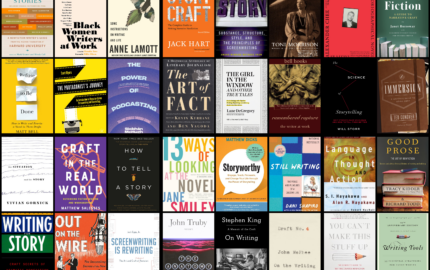In Part 1 of our coverage of this year’s Investigative Reporters & Editors conference, Kiera Feldman, a This Land correspondent, rounded up tips on documents and data, the latest in web research, source relationships, and other material that a narrative journalist might find useful. Today, in Part 2, she adapts highlights from the “Writing the Investigative Story” session with Ken Armstrong of the Seattle Times and Steve Fainaru of ESPN, and from Armstrong’s IRE tip sheet:
 Write a story, not an exposé. Think about Chekhov’s gun: Readers know that something bad is going to happen and they have to keep reading to find out what. (Armstrong)
Write a story, not an exposé. Think about Chekhov’s gun: Readers know that something bad is going to happen and they have to keep reading to find out what. (Armstrong)
Use more dialogue. Dialogue is different than straight quotes. Dialogue is people talking to each other, unguarded. Gather as much audio and video and photos as possible. If a detective conducted an interrogation or confiscated a cell phone video, you can often use it to reconstruct scenes. (Armstrong)
I’m always on. I try to remind myself of that when I’m out reporting. You never know what you’re going to use, so write down everything: snatches of dialogue, etc. (Fainaru)
Avoid bullets and formula. Bullets are “like tranquilizer darts, likely to put readers to sleep. Also, beware of the investigative-series formula: overview, case study, the fix.” (Armstrong)
Anthony Shadid was always outlining stories and blocking them out with as much detail as possible. He was really attentive to scene. He viewed the world almost cinematically. His detail is so granular, so fine. (Fainaru)
Database reporting is hard on storytelling. A story about methadone is not a story about data; it’s a story about lives. (Armstrong)
Bring a camera. Bring measuring tape. Take video. (Armstrong)
Sometimes we get too caught up in the writing. Sometimes the best way to say it is just to say it. (Fainaru)
Let the story pick you, in a way. You really have to love the story if you’re going to spend a significant amount of time on it. (Fainaru)
When organizing, consider starting with index cards. Think of each card as a mini chapter. The order will flow logically, and you can use anecdotal ledes, if you want, for each. If you get stuck, go write a mini chapter. (Armstrong)
I tape every interview that I can, then transcribe. It gives you a familiarity with the material that you can’t get otherwise. (Armstrong)
Ask short questions. Then be quiet and listen. (Armstrong)
 Write a story, not an exposé. Think about Chekhov’s gun: Readers know that something bad is going to happen and they have to keep reading to find out what. (Armstrong)
Write a story, not an exposé. Think about Chekhov’s gun: Readers know that something bad is going to happen and they have to keep reading to find out what. (Armstrong)Use more dialogue. Dialogue is different than straight quotes. Dialogue is people talking to each other, unguarded. Gather as much audio and video and photos as possible. If a detective conducted an interrogation or confiscated a cell phone video, you can often use it to reconstruct scenes. (Armstrong)
I’m always on. I try to remind myself of that when I’m out reporting. You never know what you’re going to use, so write down everything: snatches of dialogue, etc. (Fainaru)
Avoid bullets and formula. Bullets are “like tranquilizer darts, likely to put readers to sleep. Also, beware of the investigative-series formula: overview, case study, the fix.” (Armstrong)
Anthony Shadid was always outlining stories and blocking them out with as much detail as possible. He was really attentive to scene. He viewed the world almost cinematically. His detail is so granular, so fine. (Fainaru)
Database reporting is hard on storytelling. A story about methadone is not a story about data; it’s a story about lives. (Armstrong)
Bring a camera. Bring measuring tape. Take video. (Armstrong)
Sometimes we get too caught up in the writing. Sometimes the best way to say it is just to say it. (Fainaru)
Let the story pick you, in a way. You really have to love the story if you’re going to spend a significant amount of time on it. (Fainaru)
When organizing, consider starting with index cards. Think of each card as a mini chapter. The order will flow logically, and you can use anecdotal ledes, if you want, for each. If you get stuck, go write a mini chapter. (Armstrong)
I tape every interview that I can, then transcribe. It gives you a familiarity with the material that you can’t get otherwise. (Armstrong)
Ask short questions. Then be quiet and listen. (Armstrong)


